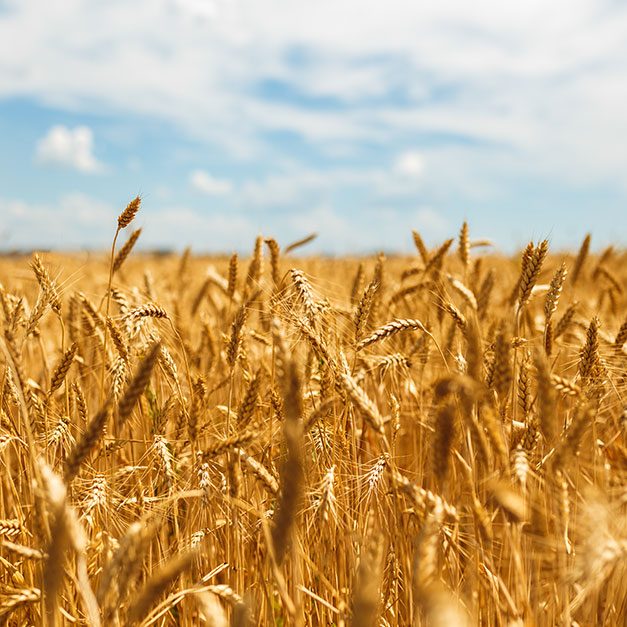How a focus on innovation and technology could help drive food sector returns in 2023.
Key points
- We believe the food system will continue to enjoy long-term structural growth driven by rising demand as global populations grow.
- We see opportunities for companies that can provide solutions that enable greater efficiency and enhance productivity; innovation is emerging across the food complex – from the farm to the table.
- We also see opportunities to tap into related areas such as agrigenomics, where plant and seed research is driving innovative new product development.
- This year, we think consumer-facing companies within the food sector are likely to experience a year of two halves: the first half driven by price hikes taken in the latter part of 2022, and the second half benefiting from input-cost moderation as hedges roll over and lower transport and energy costs begin to feed through.
- We believe the risk/reward profile has become increasingly favourable in areas such as precision agriculture, automation and robotics, which are playing a growing role in the modern food system.
Following a year marked by war in Ukraine, double-digit food inflation, and an almost unprecedented pace of central-bank interest-rate hikes, many investors will understandably be looking at 2023 with some trepidation.
Indeed, the environment remains uncertain. War continues to be waged between Russia and Ukraine, central banks appear to be signalling that interest rates are likely to go higher before they fall back, and companies globally are tightening their financial belts in anticipation of economic softening. Yet, despite this environment, we believe that selective optimism can be justified. While rates are likely to rise further, the pace of the hikes has started to decelerate. Inflation, while still high, appears to be moderating as supply chains unwind, Covid concerns fade, and global borders reopen.
Structural growth supported
Turning to the food sector, we believe the structural-growth dynamic is supported by both near and long-term tailwinds. Over the long term, demand continues to rise as global populations grow, while in the near term we believe the war in Ukraine will put pressure on planted acreage, affecting the soft commodity outlook.
In 2022, the challenge for the sector was in exporting already planted and harvested food from conflict regions. In 2023, with planted acreage down sharply, there will be less food available to export; in the absence of a sufficient supply response from other markets, we could face another year of elevated commodity prices.
With food security a growing concern, governments, regulators and markets are becoming more receptive to innovative solutions. We believe that companies with the capability to address agricultural and food-system resiliency, as well as those that enhance productivity and efficiency, will continue to gain traction. Coupled with the falls in valuation that many longer-duration, innovative companies within the food production sector saw in 2022, we believe there is an opportunity for investors to benefit.
Selective focus on agricultural equipment may reward investors
We believe it makes sense for investors in the food sector to continue to focus on several areas. With the tighter soft commodities outlook, prices are likely to see support, which should farmers. As a result, we expect farms to continue to invest. Given this health, dealer books remain full and there is potential for solid returns. While we remain cognisant of the cyclical nature of this sub-sector, we anticipate that the agricultural-equipment cycle – when it turns – will see a slower and more measured fall, as used-equipment supply remains quite limited.
We think consumer-facing companies in the food sector could be poised for a year of two halves: the first driven by price hikes in the latter part of 2022, and the second benefiting from input-cost moderation as hedges roll over and lower transport and energy costs begin to feed through. As the backdrop shifts, we expect companies with strong pricing power and supply-chain leverage to benefit.
Food innovation and supply-chain technology driving growth
The food sector continues to evolve, and innovation is reshaping the landscape. To this end, we think it makes sense for investors to increase their exposure to companies developing innovative solutions to the challenges at hand. Supply-chain technology continues to move forward, and we remain constructive on the benefits that automation and robotics are bringing to the area. We believe there are opportunities for growth in digital-agriculture technology as these tools allow the sector to drive yields with more measured input use. We also see opportunities to tap into agrigenomics, where plant and seed research is driving innovative new solutions; we believe plant and seed research can lead to the development of plant varieties which are more temperature, drought and pest-tolerant.
We expect opportunities in this area to continue to grow, as regulatory changes and market demand drive increasing adoption of these tools. Precision fermentation and the use of this technology to produce new ingredients, as well as the emerging area of cultivated protein, remain highly relevant to an evolving food sector. Following a marked reset in valuations, we believe these disruptive, higher-growth areas of the food system are presenting increasingly attractive investment entry points.
We know that economic activity will continue to be buffeted by several macro cross-currents in 2023. However, we believe that the food sector will continue to experience growth within this environment, with the opportunity for those companies that can genuinely innovate to continue to drive momentum in the sector.
This is a financial promotion. These opinions should not be construed as investment or other advice and are subject to change. This material is for information purposes only. This material is for professional investors only. Any reference to a specific security, country or sector should not be construed as a recommendation to buy or sell investments in those securities, countries or sectors. Please note that holdings and positioning are subject to change without notice. This article was written by members of the NIMNA investment team. ‘Newton’ and/or ‘Newton Investment Management’ is a corporate brand which refers to the following group of affiliated companies: Newton Investment Management Limited (NIM) and Newton Investment Management North America LLC (NIMNA). NIMNA was established in 2021 and is comprised of the equity and multi-asset teams from an affiliate, Mellon Investments Corporation.
Important information
Issued by Newton Investment Management Ltd. ‘Newton’ and/or ‘Newton Investment Management’ is a corporate brand which refers to the following group of affiliated companies: Newton Investment Management Limited (NIM), Newton Investment Management North America LLC (NIMNA) and Newton Investment Management Japan Limited (NIMJ). NIMNA was established in 2021 and NIMJ was established in March 2023. In the United Kingdom, NIM is authorised and regulated by the Financial Conduct Authority (‘FCA’), 12 Endeavour Square, London, E20 1JN, in the conduct of investment business. Registered in England no. 01371973. Registered office: 160 Queen Victoria Street, London, EC4V 4LA, UK. NIM and NIMNA are both registered as investment advisors with the Securities & Exchange Commission (‘SEC’) to offer investment advisory services in the United States. NIM’s investment business in the United States is described in Form ADV, Part 1 and 2, which can be obtained from the SEC.gov website or obtained upon request. NIMJ is authorised and regulated by the Japan Financial Services Agency (JFSA). All firms are indirect subsidiaries of The Bank of New York Mellon Corporation (‘BNY’).






Comments